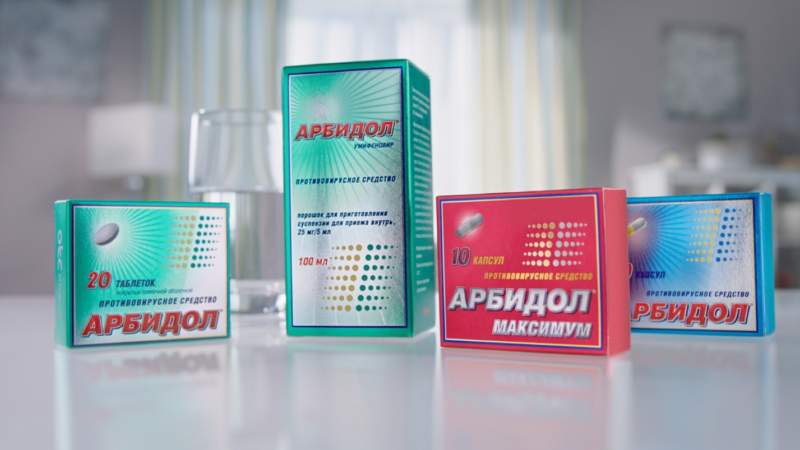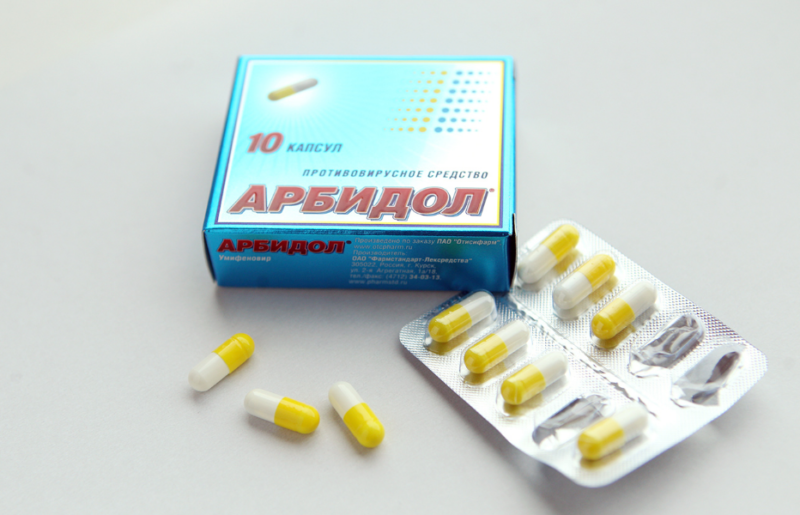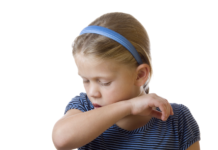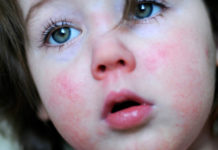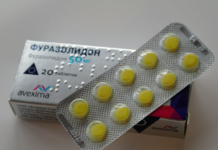As a rule, it is the child’s body that is most susceptible to various diseases that are caused by viruses. During the period of seasonal epidemics, the child’s fragile immune system can weaken, which subsequently affects its health. At the very first symptoms of a viral disease, it is recommended to use the children's "Arbidol", which acts absolutely safely.
Material Content:
Description of release forms for the child and their composition
The antiviral drug for children is produced by pharmaceutical companies in several convenient variations:
- pills;
- capsules;
- powder for suspension.
Often, small patients are prescribed a powder preparation. However, all dosage forms contain the same main compound - umifenovir (hydrochloride monohydrate). In addition, a number of excipients are present in the component composition: pyrogenic silicon dioxide, MCC, calcium, povidone, calcium stearate, cellulose. Sucrose, sucralose and flavorings are present in the suspension.
Pharmacological action and pharmacokinetics
"Arbidol" acts as a cold and immunostimulating drug, which is also characterized by antioxidant activity. It is not an antibiotic. The main active compound, which is umifenovir, has a direct effect on the pathogenic protein. Hemagglutin, which is located on the surface of the virus, contributes to the destruction of the body, however, "Arbidol" blocks its production.
It is also worth noting the immunomodulating mechanism of action of this drug. Due to this property, the process of activating the production of interferon occurs. This compound is directly related to the body's defenses and its ability to withstand various infections and viruses. Arbidol in any form is able to significantly reduce the manifestations of diseases due to the detoxification effect.
In what cases is prescribed children's Arbidol
The first signs of a childhood cold are quite simple to confuse with other, more serious diseases, so independent prescribing of a course of therapy is unacceptable for children. The use of "Arbidol" must be agreed with the attending physician, who will make a differential diagnosis and select the optimal treatment regimen.
According to the instructions for use, a medicinal product can be in demand in such diseases and conditions:
- respiratory diseases (both as a therapy and as a prophylaxis);
- rotavirus or intestinal infectious diseases;
- weakened immunity, regardless of the causes of this condition;
- complicated bronchitis, herpes, or pneumonia;
- secondary immunodeficiencies.
Quite often, "Arbidol" is used as part of complex treatment for various lesions of the body of a viral or infectious nature.
Instructions for use and dosage of tablets and suspensions
The optimal dosage form for each case, as well as the method of its use, are determined only by the attending physician, which takes into account the age and condition of the patient.
As a rule, small children are prescribed a powder, while older children are prescribed a tablet form.
The dosage regimen is strictly individual, however, the approximate dosage of Arbidol 50 mg tablets and capsules is as follows:
- from 3 to 6 years - 50 mg;
- up to 12 years - 100 mg;
- older age - 200 mg.
Therapy of each disease requires an individual approach:
- For the prevention and treatment of acute respiratory viral infections and rotavirus, patients over 12 years of age are shown taking 200 mg four times a day. From 3 to 6 - 50 mg, from 6 to 12 - 100 mg.
- To prevent SARS, patients 6-12 years old are recommended 100 mg of the drug per day.
- To prevent the serious consequences of viral etiology after surgery, children under 6 years of age should take "Arbidol" at 50 mg per day, up to 12 and at 100 mg.
Tablets should be drunk a few minutes before a meal, not chewed, but washed down with a small amount of liquid. Patients from two years of age are prescribed suspension therapy. For its preparation, it is necessary to add liquid to the vial to the level of 100 ml, and then mix the composition thoroughly until completely homogeneous.
Using a measuring spoon, a one-time dosage is measured:
- From two to six years - 10 ml once.
- From 6 to 12 years - 20 ml.
- Senior age - 40 ml.
For the prevention and treatment of influenza, the Arbidol suspension for children is recommended for small patients from two years old twice a day. The duration of treatment can be several months.
- After interacting with a sick person, a standard dose is prescribed once for two weeks.
- For the treatment of intestinal infection, the recommended dosage is taken 4 times a day (every six hours).
- To eliminate SARS, patients over 12 years of age are prescribed 40 ml of Arbidol twice a day.
Drug interaction
When using "Arbidol" in strictly prescribed therapeutic dosages, this agent is not able to interact with other medications. In this regard, the use of complex therapy is allowed, which includes taking the antiviral Arbidol.
Contraindications, side effects and overdose
As a rule, this therapeutic agent does not cause negative reactions in patients.
However, despite the proven safety, children's "Arbidol" has a number of contraindications, in which its use is not allowed:
- Age up to three years (for tablets).
- Age up to two years (for suspension).
- Inadequate response of the immune system to certain components.
- Hepatic, renal, heart failure (admission with caution).
- Sucrose deficiency.
- Fructose intolerance.
- Glucose-galactose malabsorption.
It should also be borne in mind that some forms of "Arbidol" can be given to patients only older than 12 years (for example, "Arbidol maximum").
In this regard, it is recommended to coordinate the use of this medication with your doctor.
According to the results of WHO studies, it was found that the drug does not cause adverse reactions. In some cases, an individual immune response may occur, which manifests itself in the form of an allergy.
If you are intolerant, you should cancel the remedy and give the child antihistamines.
There were no cases of overdose.
Analogs
Currently, there is a fairly large group of substitutes for this drug. It is also worth noting that this group includes not only analogues, but also synonyms for the children's “Arbidol”.
In their role are medicines that contain the same active compounds in their composition:
- "Arpeflu";
- Arpetolid;
- Arpetol;
- "ORVItol".
Analogs in this respect differ from this group of substitutes - they have different component compositions, but are as close as possible to the pharmacological effect and therapeutic effect. Thus, the analogues of this drug include: Amizon, Nikavir, Armenicum, Lavomax, Kagocel, Virasept and others.


